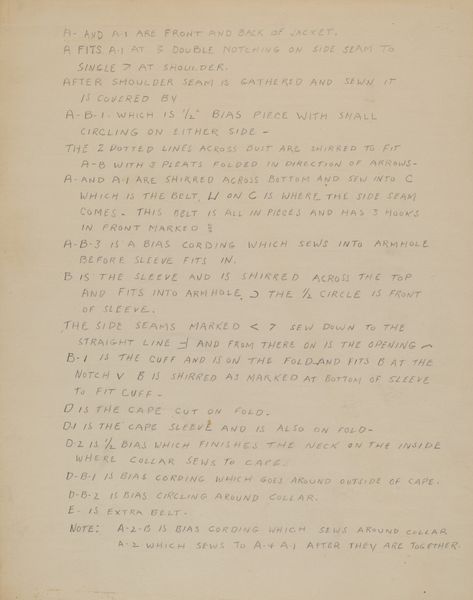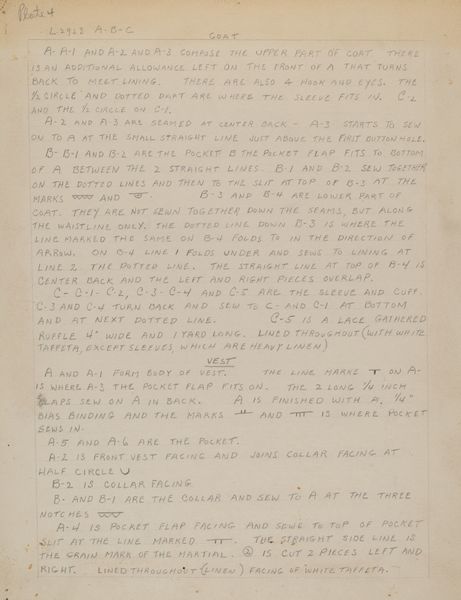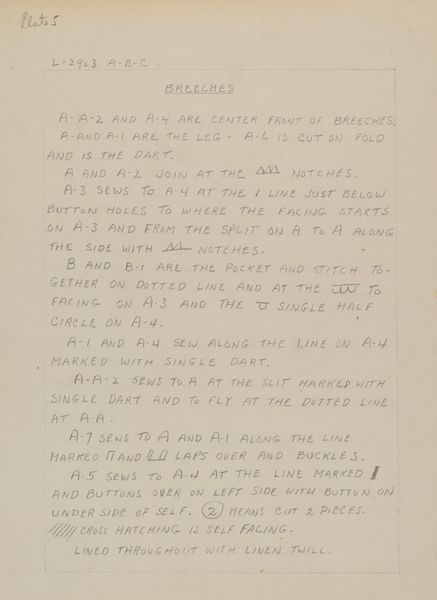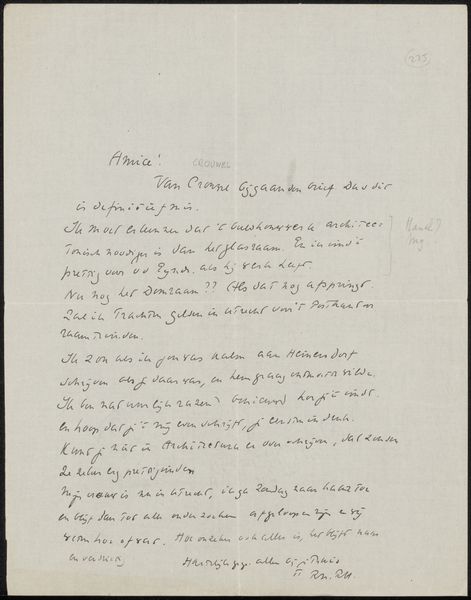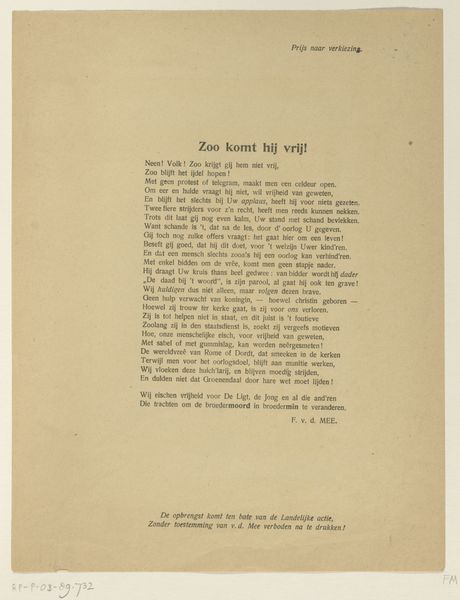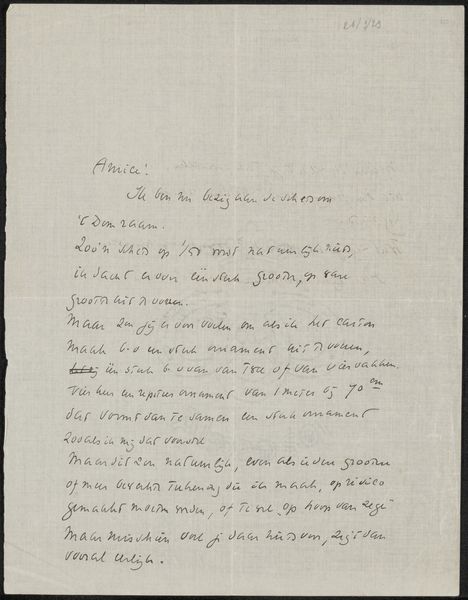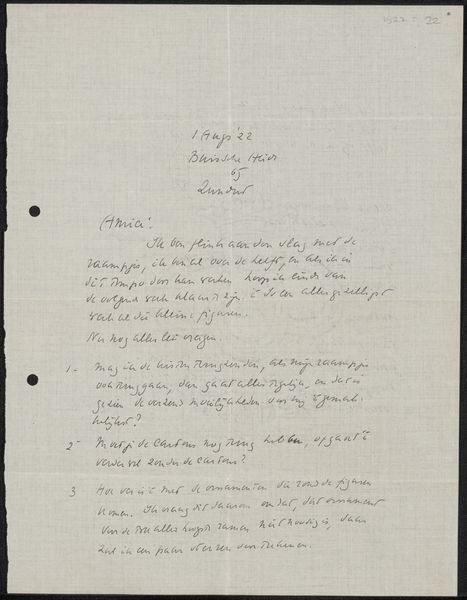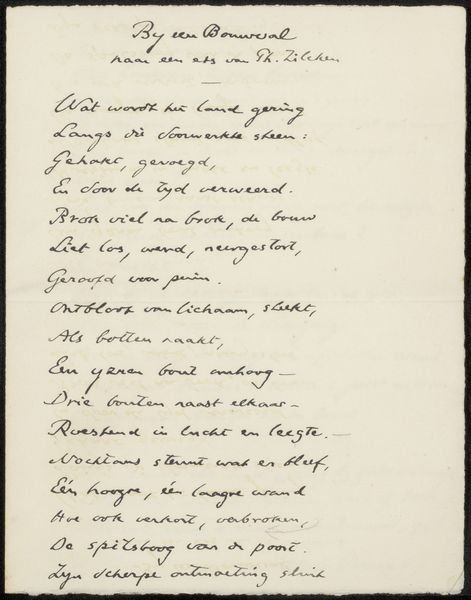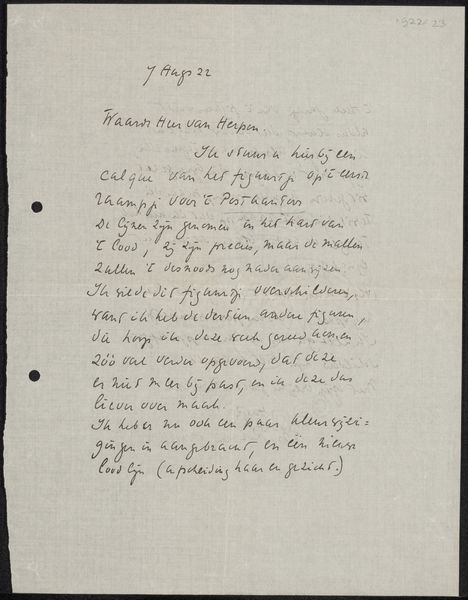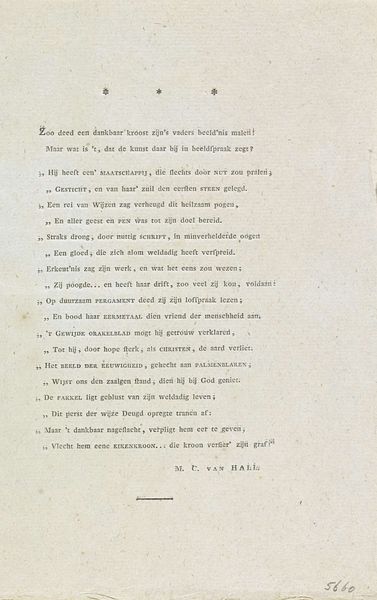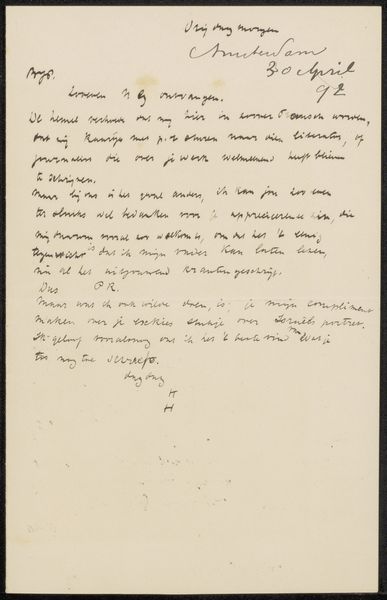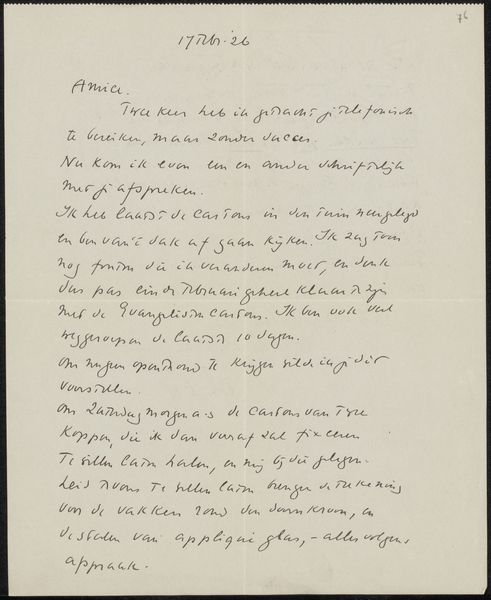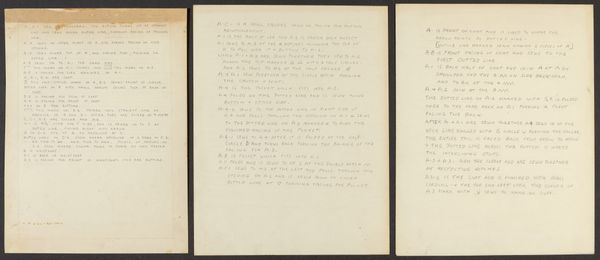
drawing, textile, paper, pencil
#
drawing
#
textile
#
paper
#
pencil
#
academic-art
Dimensions: overall: 29.1 x 22.6 cm (11 7/16 x 8 7/8 in.)
Copyright: National Gallery of Art: CC0 1.0
Curator: This is "Description of a Girl's Dress," a pencil and textile on paper drawing created around 1937 by Nancy Crimi. Editor: At first glance, it’s more like a schematic than art, almost an instructional guide or pattern. The handwriting is neat but technical, the drawing functional. Curator: Precisely! This piece disrupts traditional hierarchies. It’s both an artwork and a practical document outlining the construction of a child’s dress. Crimi’s choice of pencil, a readily available tool, emphasizes accessibility. We're seeing the process laid bare. Editor: Yes, the writing itself forms patterns. See how “A-A1 are ½ Bodice” is repeated throughout? This anchors it to that textual rhythm. And how the references A-B-C feel ritualistic and ancient like the repeated shapes within mandalas or ancient Greek pottery designs. There’s an order being imposed on creation. Curator: Exactly. The materials, simple paper and pencil, underscore the quotidian nature of dressmaking, challenging the elevation of art above craft. The “XX” marking snaps or buttons could be from clothing labels used from a store nearby. This speaks to the devaluing of labor intrinsic to fast fashion. Editor: Though seemingly austere, the text describing shirring, tucks, and seams conjures images of tactile richness—the very feel of the fabric against the skin, the play of light and shadow created by the folds and pleats, they hold an emotional depth of the care that a maker puts into garment. One can envision the dressmaker, the work itself becomes an act of devotion, perhaps to one's daughters, nieces or one self. Curator: A fascinating point. The detailed instructions humanize the process, highlighting the skill and labor invested in something often taken for granted. We can look past high fashion and examine where its designs originate. Editor: For me, the repeated letters also evoke a sense of continuity, a connection to the past. Patterns like these exist for centuries to link generations. Curator: It's fascinating how Crimi invites us to consider both the abstract and tangible aspects of clothing production and the lives they once had. Editor: I agree. "Description of a Girl’s Dress" makes us see dressmaking not just as production, but a quiet carrier of social fabric.
Comments
No comments
Be the first to comment and join the conversation on the ultimate creative platform.
